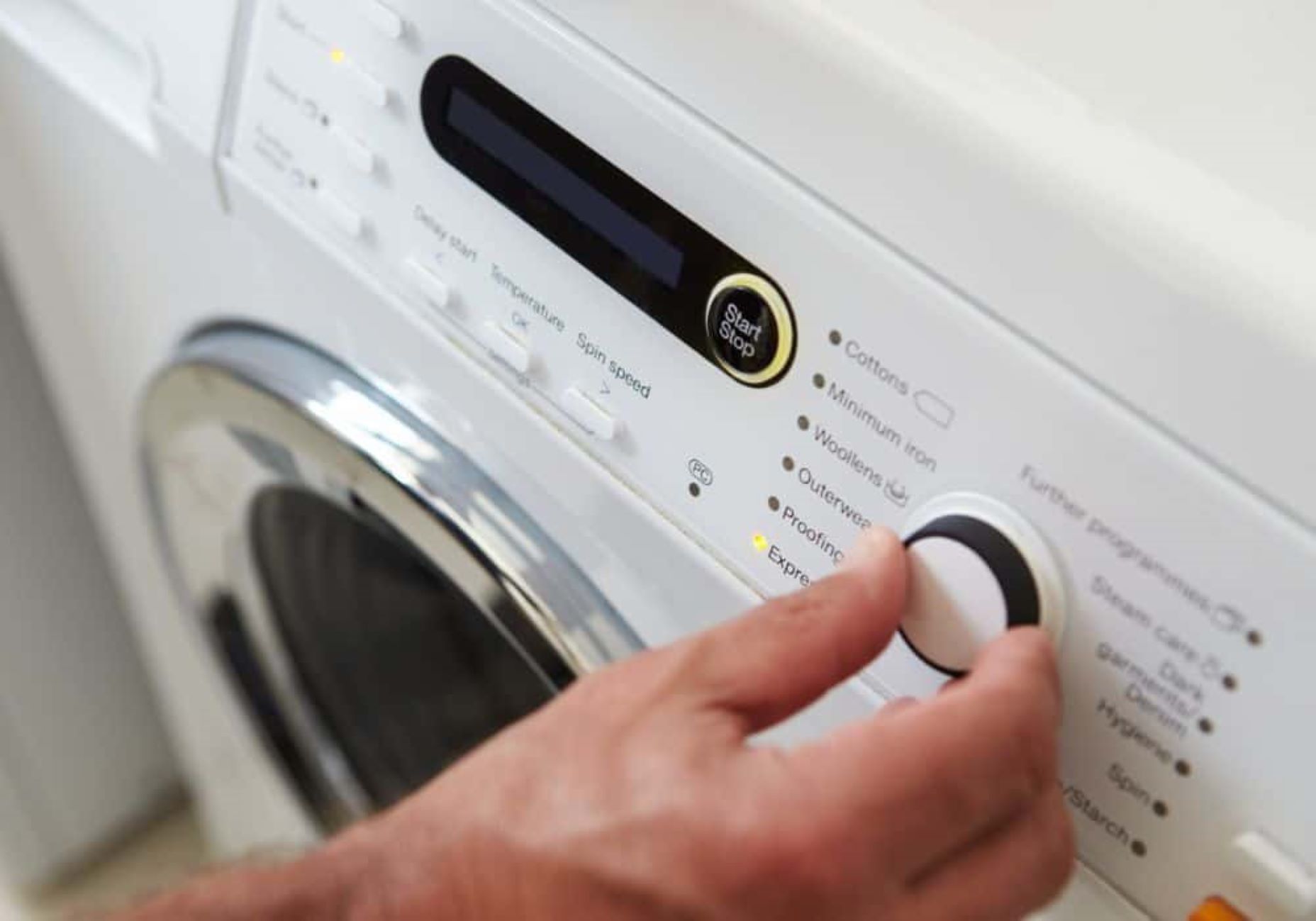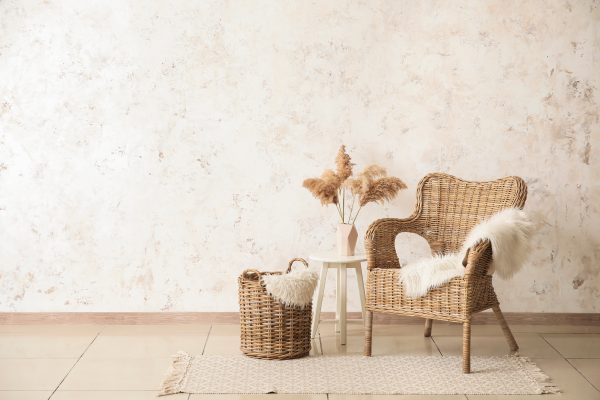Home>Interior Design>Satin Vs Semi-gloss Paint – What Are The Differences?


Interior Design
Satin Vs Semi-gloss Paint – What Are The Differences?
Modified: January 19, 2024
Discover the key distinctions between satin and semi-gloss paint in interior design. Make informed choices for your home renovation project with our comprehensive guide.
(Many of the links in this article redirect to a specific reviewed product. Your purchase of these products through affiliate links helps to generate commission for Storables.com, at no extra cost. Learn more)
Introduction
When it comes to painting interior surfaces, choosing the right type of paint can make a significant difference in the overall look and feel of a space. Two popular options for interior paint finishes are satin and semi-gloss. These two paint types share similarities but also have distinct differences that should be considered when making a decision.
In this article, we will explore the differences between satin and semi-gloss paint, including their sheen, reflectivity, durability, usage, application, and maintenance. By understanding these differences, you will be able to make an informed decision about which type of paint is best suited for your interior design project.
Key Takeaways:
- Satin paint offers a subtle, elegant finish, ideal for hiding imperfections and creating a relaxed ambiance in spaces like bedrooms and living rooms. It provides good stain resistance and versatility for various interior surfaces.
- Semi-gloss paint provides a vibrant, polished appearance with exceptional durability, making it suitable for high-traffic areas and surfaces that require regular cleaning. It highlights architectural details and adds a touch of sophistication to spaces like kitchens and bathrooms.
Definition of Satin Paint
Satin paint is a popular choice for interior surfaces due to its smooth and subtle finish. It is often referred to as a “low-luster” or “eggshell” finish. Satin paint strikes a balance between a matte and glossy finish, providing a soft sheen that is suitable for a variety of applications.
One defining characteristic of satin paint is its level of reflectivity. It has a slightly higher sheen than a matte finish but is less reflective than semi-gloss paint. Satin paint is known for its ability to hide imperfections on walls, making it an ideal choice for areas with minor flaws or uneven surfaces.
Additionally, satin paint offers good stain resistance, making it easier to clean compared to matte finishes. This makes it a suitable option for high-traffic areas such as hallways, kitchens, and bathrooms, where dirt and stains are more likely to occur.
It is important to note that the level of sheen in satin paint can vary between different manufacturers. Some satin paints may have a slightly higher sheen, resembling a soft glow, while others may have a more subtle finish. It is always recommended to test a small area or obtain a sample before committing to a full application.
Definition of Semi-Gloss Paint
Semi-gloss paint is a popular choice for interior surfaces that require a higher level of durability and shine. It is characterized by its medium to high sheen and reflective properties. Semi-gloss paint offers a polished and glossy appearance that can add a touch of elegance to any space.
One of the defining features of semi-gloss paint is its high level of reflectivity. It reflects light more intensely than satin or matte finishes, creating a bright and lustrous surface. This makes semi-gloss paint an excellent choice for areas that require a vibrant and eye-catching look, such as trim, doors, cabinets, and furniture.
Due to its higher sheen, semi-gloss paint has the ability to highlight imperfections on the surface. It is not as forgiving as satin paint when it comes to concealing minor flaws or uneven textures. Therefore, it is recommended to properly prepare and smooth the surface before applying semi-gloss paint for the best results.
In terms of durability, semi-gloss paint is known for its resistance to moisture, stains, and wear. It is relatively easy to clean, making it suitable for areas prone to spills and splashes, such as kitchens and bathrooms. The glossy finish also provides a protective barrier against moisture damage, making semi-gloss paint a popular choice for surfaces that require regular cleaning and maintenance.
It is essential to keep in mind that the level of sheen in semi-gloss paint can vary between different brands and manufacturers. Some may have a subtle sheen, while others may have a more intense shine. It is recommended to test a small area or obtain a sample to ensure that the desired level of gloss is achieved.
Differences in Sheen
One of the key differences between satin and semi-gloss paint lies in their level of sheen. Sheen refers to the amount of light reflection on the painted surface, and it plays a significant role in determining the overall appearance and ambiance of a room. Let’s explore the differences in sheen between satin and semi-gloss paint.
Satin paint has a lower level of sheen compared to semi-gloss paint. It offers a soft and subtle glow that is less reflective, giving the surface a smoother appearance. The lower sheen of satin paint helps to disguise minor imperfections on the wall, making it a suitable choice for areas with less-than-perfect surfaces.
On the other hand, semi-gloss paint has a higher level of sheen. It provides a glossy and reflective finish that catches the light and creates a vibrant, polished look. The higher sheen of semi-gloss paint adds depth and dimension to the surface and makes it more visually striking. However, it also means that it can highlight any imperfections or flaws on the wall.
The choice between satin and semi-gloss paint in terms of sheen largely depends on personal preference and the desired aesthetic. Satin paint is often chosen for its ability to create a more subdued and elegant look. It works well in bedrooms, living rooms, and other areas where a soft and sophisticated ambiance is desired.
Semi-gloss paint, with its higher sheen, is often chosen for areas that require a more vibrant and dynamic appearance. It is commonly used on surfaces such as trim, doors, and cabinets to add a touch of drama and draw attention to those elements. The reflective properties of semi-gloss paint can make a space feel brighter and more visually appealing.
Ultimately, the choice of sheen between satin and semi-gloss paint depends on the overall design concept, the style of the room, and personal preference. It is important to consider the desired level of reflectivity and the impact it will have on the overall ambiance before making a decision.
Differences in Reflectivity
When comparing satin and semi-gloss paint, another important distinction to consider is their level of reflectivity. Reflectivity refers to the way light bounces off the painted surface, affecting the overall brightness and visual impact of a room. Let’s explore the differences in reflectivity between satin and semi-gloss paint.
Satin paint has a lower level of reflectivity compared to semi-gloss paint. Its smooth and subtle finish allows for a diffusion of light, resulting in a softer and more muted reflection. This lower reflectivity helps to create a calm and soothing atmosphere in a room, making it an ideal choice for spaces where a relaxed ambiance is desired.
In contrast, semi-gloss paint has a higher level of reflectivity. Its glossy surface reflects light more intensely, creating a brighter and more vibrant appearance. This higher reflectivity adds a level of sophistication and elegance to a space, making it a popular choice for areas that require a visually striking impact.
The differences in reflectivity between satin and semi-gloss paint contribute to their varied visual effects. Satin paint’s lower reflectivity can help to minimize glare and reduce the appearance of surface imperfections, making it a suitable option for walls and ceilings in living rooms, bedrooms, and dining rooms.
Semi-gloss paint, with its higher reflectivity, is often chosen for surfaces that need to stand out and make a statement. It is commonly used on architectural details, trim, doors, and furniture to create a glossy and eye-catching effect. The intense reflection of light can make a space feel more open and airy, enhancing the overall brightness of a room.
When deciding between satin and semi-gloss paint, it is important to consider the desired level of reflectivity and its impact on the overall atmosphere of a room. Reflectivity can influence how light interacts with surfaces and how colors appear, so it should be carefully considered in relation to the design concept and the specific requirements of the space.
Read more: What Grit Sandpaper To Sand Semi Gloss Paint
Differences in Durability
When selecting a paint finish for your interior surfaces, it is essential to consider the durability of the paint. Durability encompasses factors such as resistance to wear, moisture, stains, and the ability to withstand regular cleaning. Let’s explore the differences in durability between satin and semi-gloss paint.
Satin paint offers a good level of durability, making it suitable for many interior applications. It is relatively resistant to wear, and its smooth finish helps to resist minor scratches and scuffs. Satin paint also has decent stain resistance, allowing for easier cleaning of common spills and splatters.
However, it is important to note that satin paint may not be as durable as semi-gloss paint in high-traffic areas or places that are prone to moisture. While it can hold up well in most rooms, it may not be the best choice for surfaces that require frequent cleaning or that are exposed to moisture, such as bathrooms or kitchens.
Semi-gloss paint, on the other hand, is known for its exceptional durability. Its glossy finish creates a protective barrier against moisture, making it highly resistant to water and stains. This makes it an ideal choice for areas that require regular cleaning or are exposed to moisture, such as bathrooms, kitchens, and laundry rooms.
Semi-gloss paint is also more resistant to wear and tear compared to satin paint. Its higher sheen contributes to its durability, as the glossy surface can withstand more scrubbing and cleaning without damaging the paint. This makes semi-gloss paint a great option for trim, doors, and other surfaces that are frequently touched or handled.
When deciding between satin and semi-gloss paint based on durability, it is crucial to consider the specific needs of the space. For areas with less traffic and lower exposure to moisture, satin paint provides a good level of durability. However, for high-traffic areas or surfaces that require regular cleaning and moisture resistance, semi-gloss paint is the more durable choice.
Differences in Usage
When it comes to choosing between satin and semi-gloss paint, understanding their differences in usage can help you make an informed decision for your interior design project. While both finishes have their advantages, they are better suited for certain applications. Let’s explore the differences in usage between satin and semi-gloss paint.
Satin paint is a versatile option that can be used in various areas of the home. Its smooth and subtle finish works well on walls, ceilings, and other large surfaces. Satin paint is particularly suitable for spaces where a more subdued and elegant look is desired, such as living rooms, dining rooms, and bedrooms.
The ability of satin paint to hide imperfections on the wall makes it a practical choice for areas with slightly uneven surfaces. Whether it’s a minor flaw or an uneven texture, satin paint’s low sheen can help to disguise these imperfections, resulting in a smoother appearance.
Semi-gloss paint, on the other hand, is commonly used for specific areas that require a more vibrant and eye-catching look. Its glossy and reflective finish makes it an ideal choice for architectural details, trim, doors, cabinets, and furniture. The high sheen of semi-gloss paint adds a touch of sophistication and draws attention to these elements.
Due to its high reflectivity, semi-gloss paint can make a space feel brighter and more visually appealing. It works well on surfaces that need to stand out and make a statement, such as a front door or a feature wall. It is also a popular choice for high-traffic areas that require more durability and regular cleaning, such as kitchens and bathrooms.
When considering the usage of satin or semi-gloss paint, it is essential to think about the overall design concept, the desired ambiance, and the specific requirements of each space. Satin paint is versatile and can be used in many areas, while semi-gloss paint is better suited for surfaces that need a glossy and attention-grabbing finish. By carefully considering the usage, you can select the most appropriate paint finish for each part of your interior design project.
Differences in Application
When it comes to applying paint, there are some differences to consider between satin and semi-gloss finishes. The application process can vary for each type of paint, and understanding these differences can help you achieve the best results. Let’s explore the differences in application between satin and semi-gloss paint.
Satin paint is generally easier to apply compared to semi-gloss paint. Its smooth and forgiving finish helps to hide brush or roller marks, making it more forgiving for DIY painters. Satin paint is often applied with a roller or paintbrush, and it can be evenly spread onto surfaces without much difficulty.
However, it is important to note that when applying satin paint on larger surfaces, such as walls, it may require more coats to achieve full coverage. This is because satin paint tends to have a lower pigment concentration, resulting in a more translucent finish. It is advisable to apply multiple thin coats of satin paint to achieve a consistent and smooth result.
In contrast, applying semi-gloss paint requires more attention to detail and precision. Due to its high reflectivity, any brush or roller marks can be more noticeable on the glossy surface. Therefore, it is essential to ensure a smooth application and avoid visible strokes or uneven coverage.
When applying semi-gloss paint, it is recommended to use high-quality brushes or rollers to achieve the best results. It is also important to pay attention to the drying time and avoid overworking the paint, as this can lead to uneven texture or streaks. A professional-grade application may be necessary to achieve a flawless finish.
Both satin and semi-gloss paint can be successfully applied with proper techniques and tools. However, it is important to consider the desired outcome and the skill level of the painter when choosing between the two. Satin paint is more forgiving and easier to apply for DIY projects, while semi-gloss paint may require more expertise to achieve a professional-looking finish.
Ultimately, the choice of application between satin and semi-gloss paint depends on your comfort level, the size of the project, and the desired outcome. Taking your time and using the appropriate techniques and tools for each paint type will help you achieve the best possible results.
Differences in Maintenance
When it comes to maintenance, there are differences to consider between satin and semi-gloss paint. The level of care required for each finish can impact the longevity and appearance of your painted surfaces. Let’s explore the differences in maintenance between satin and semi-gloss paint.
Satin paint requires relatively low maintenance compared to semi-gloss paint. Its smooth and subtle finish is more forgiving when it comes to minor dirt and smudges. Satin paint also has good stain resistance, making it easier to clean compared to finishes with higher gloss levels.
To maintain satin paint, regularly dusting or using a soft cloth to remove loose dirt and debris is usually sufficient. For light stains, a gentle cleaning solution with mild soap and water can be used. It is important to avoid using abrasive scrubbers or harsh chemicals, as they can damage the paint surface and affect its appearance.
When it comes to semi-gloss paint, it requires more frequent maintenance and attention due to its higher reflectivity. The glossy finish of semi-gloss paint can make dust, smudges, and fingerprints more noticeable. It may require more regular cleaning to keep its vibrant appearance.
To maintain semi-gloss paint, dusting or wiping down the surfaces with a soft cloth on a regular basis is essential. For removing stains or grime, a mild cleaning solution or a non-abrasive cleaner formulated for use on painted surfaces can be used. It is important to avoid using rough scrub brushes or abrasive cleaners, as they can scratch or dull the glossy finish.
Both satin and semi-gloss paint can benefit from occasional touch-ups to maintain their overall appearance. Small scratches or scuffs can be easily touched up with matching paint to keep the surfaces looking fresh and uniform.
When considering the maintenance of satin or semi-gloss paint, it is important to take into account the specific requirements of each space. High-traffic areas or rooms prone to moisture, such as kitchens or bathrooms, may benefit from the added durability and easy cleaning of semi-gloss paint. On the other hand, spaces that require a more relaxed ambiance and have minimal foot traffic may be better suited for satin paint.
By following proper maintenance practices for each finish, you can ensure that your painted surfaces retain their beauty and longevity for years to come.
Read more: Satin Vs Matte Paint: Which Is Better Where?
Pros and Cons of Satin Paint
Satin paint offers several advantages and disadvantages that should be considered when choosing it for your interior surfaces. Understanding the pros and cons can help you determine whether satin paint is the right choice for your project. Let’s explore the pros and cons of satin paint.
Pros:
- Elegant and Subtle Finish: Satin paint provides a smooth and sophisticated appearance, giving your walls a soft glow that adds warmth to a space.
- Hides Imperfections: The low-sheen finish of satin paint helps to minimize the appearance of minor flaws or uneven surfaces, making it ideal for less-than-perfect walls.
- Good Stain Resistance: Satin paint offers decent stain resistance, allowing for easier cleaning of spills and stains compared to matte finishes.
- Versatile: Satin paint works well on a variety of interior surfaces, including walls, ceilings, and even furniture, providing a cohesive and elegant look.
- Reflection of Natural Light: Satin paint reflects natural light subtly, creating a pleasant and inviting atmosphere without causing excessive glare or reflections.
Cons:
- Multiple Coats for Full Coverage: Satin paint may require multiple coats to achieve full coverage, especially if the base color is darker. This can increase the time and cost of a paint project.
- Less Durability: Satin paint may not be as durable as other finishes, making it more prone to wear and damage in high-traffic areas or spaces exposed to moisture.
- Not Ideal for High Gloss: If you desire a highly glossy or shiny finish, satin paint may not provide the level of reflectivity that you are looking for.
- Visible Touch-Ups: Due to its sheen, satin paint can make touch-ups more noticeable if the new paint does not perfectly match the existing color and texture.
When considering satin paint, it is crucial to weigh its pros and cons against your specific project requirements. Satin paint can be a great choice for creating an elegant and understated look, especially in areas with minimal wear and tear. However, its drawbacks should also be taken into account, especially if durability and high gloss are more important factors for your project.
Pros and Cons of Semi-Gloss Paint
Semi-gloss paint has its own set of advantages and disadvantages that should be considered when selecting it for your interior surfaces. Understanding the pros and cons can help you decide whether semi-gloss paint is the right choice for your project. Let’s explore the pros and cons of semi-gloss paint.
Pros:
- High Durability: One of the biggest advantages of semi-gloss paint is its exceptional durability. The glossy finish creates a protective barrier against moisture, making it resistant to stains, wear, and damage.
- Easy to Clean: Semi-gloss paint is highly washable, making it ideal for areas prone to splashes, spills, or fingerprints. It can be easily wiped down without causing damage to the painted surface.
- Enhanced Reflectivity: The higher reflectivity of semi-gloss paint adds depth and dimension to a space. It can make a room feel brighter and more visually appealing by reflecting light more intensely.
- Highlight Architectural Details: Semi-gloss paint is often used to emphasize architectural details, trim, doors, cabinets, and furniture. The glossy finish draws attention to these elements and adds a touch of sophistication.
- Stands Out: The vibrant and eye-catching appearance of semi-gloss paint can make a statement in a room. It creates a polished and luxurious look that adds visual impact.
Cons:
- Highlights Imperfections: The glossy finish of semi-gloss paint can accentuate imperfections and surface flaws. Proper surface preparation is necessary to ensure a smooth and flawless result.
- Difficulty in Application: Applying semi-gloss paint requires more precision and attention to detail. Brush or roller marks can be more noticeable on the glossy surface, making it more challenging to achieve a professional finish.
- Maintenance: The higher reflectivity of semi-gloss paint can make dust, smudges, and fingerprints more apparent. Regular cleaning and maintenance are necessary to keep the glossy finish looking pristine.
- Less Subdued Look: If you prefer a more subdued or understated look, the high reflectivity of semi-gloss paint may be too vibrant or attention-grabbing for your taste.
When considering semi-gloss paint, it’s important to weigh its pros and cons against the specific requirements of your project. Semi-gloss paint is a great choice for areas that require durability, easy cleaning, and a polished appearance. However, its drawbacks, such as highlighting imperfections and requiring more precise application, should also be taken into consideration before making a decision.
Satin paint has a smooth, velvety finish that is easy to clean and hides imperfections, while semi-gloss paint has a shiny, durable finish that is also easy to clean but may highlight surface flaws. Consider the level of sheen and the desired level of durability when choosing between the two.
Factors to Consider when Choosing between Satin and Semi-Gloss Paint
Choosing between satin and semi-gloss paint for your interior surfaces requires careful consideration of several factors. These factors can help you determine which finish will best meet the needs and design goals of your project. Let’s explore the key factors to consider when choosing between satin and semi-gloss paint.
Aesthetic Appearance:
Consider the overall look and feel you want to achieve in the space. Satin paint provides a more subtle and understated finish, creating an elegant and sophisticated ambiance. Semi-gloss paint, on the other hand, offers a vibrant and polished appearance that adds depth and drama to a room. Think about how each finish will complement your design concept and the desired aesthetic.
Surface Imperfections:
Assess the condition of the surfaces you plan to paint. Satin paint is excellent at hiding minor imperfections and uneven textures, making it a good choice for walls with flaws. On the other hand, semi-gloss paint’s glossy surface tends to highlight imperfections. If you have smooth surfaces and want to showcase architectural details, semi-gloss paint may be suitable. However, for less-than-perfect walls, satin paint might be a better choice.
Durability and Maintenance:
Consider the level of durability and maintenance required for your specific project. Semi-gloss paint offers excellent durability, making it ideal for high-traffic areas and surfaces that require regular cleaning. It is resistant to moisture, stains, and wear. Satin paint has decent durability, but it may not perform as well in areas exposed to significant wear and tear or moisture. Assess the level of maintenance you are willing to commit to and choose accordingly.
Lighting Conditions:
Take into account the natural and artificial lighting in the space. Satin paint reflects light more subtly and is less likely to cause glare or excessive reflections. If you have ample natural light or bright artificial lighting, satin paint can help create a softer and more soothing effect. In spaces with limited natural or artificial light, semi-gloss paint’s high reflectivity can improve brightness and illumination.
Specific Usage:
Consider the specific areas and surfaces you plan to paint. Satin paint is versatile and can be applied to various interior surfaces, including walls, ceilings, and furniture. It is a popular choice for living rooms, bedrooms, and dining rooms. Semi-gloss paint excels in highlighting architectural details, trim, doors, and cabinets. It is commonly used in kitchens, bathrooms, and other areas that require a glossy and attention-grabbing finish.
By considering these factors – aesthetic appearance, surface conditions, durability and maintenance requirements, lighting conditions, and specific usage – you can make a well-informed decision between satin and semi-gloss paint. Evaluate your project’s unique needs and prioritize the factors that matter most to you to select the most appropriate finish for your interior surfaces.
Read more: How To Fix E2 Error In A Washing Machine
Conclusion
Choosing between satin and semi-gloss paint can significantly impact the overall look and feel of your interior spaces. Each finish offers its own set of advantages and considerations, and understanding their differences is crucial in making an informed decision for your project.
Satin paint, with its smooth and subtle finish, provides an elegant and sophisticated look. It is versatile, hiding minor imperfections on walls, and offering good stain resistance. Satin paint is suitable for areas where a relaxed ambiance is desired, such as bedrooms, living rooms, and dining rooms.
Semi-gloss paint, with its high sheen and reflectivity, offers a polished and vibrant appearance. It is highly durable, making it ideal for high-traffic areas and surfaces that require regular cleaning. Semi-gloss paint creates a visually striking impact and is commonly used on architectural details, trim, doors, and cabinets.
Considerations such as the aesthetic appearance, surface imperfections, durability, lighting conditions, and specific usage are important factors in choosing between satin and semi-gloss paint. Assess your project’s requirements and prioritize the factors that align with your goals and preferences.
Ultimately, there is no one-size-fits-all answer. Each paint finish has its own strengths and weaknesses. Whether you choose satin or semi-gloss, the key is to select the finish that best suits your design concept, desired ambiance, and specific needs for each space.
Remember, you can always consult with paint professionals or test samples of both finishes on your surfaces before making a final decision. A well-chosen paint finish will not only enhance the aesthetic appeal of your interiors but also ensure that your surfaces maintain their beauty and longevity for years to come.
Frequently Asked Questions about Satin Vs Semi-gloss Paint – What Are The Differences?
Was this page helpful?
At Storables.com, we guarantee accurate and reliable information. Our content, validated by Expert Board Contributors, is crafted following stringent Editorial Policies. We're committed to providing you with well-researched, expert-backed insights for all your informational needs.











0 thoughts on “Satin Vs Semi-gloss Paint – What Are The Differences?”